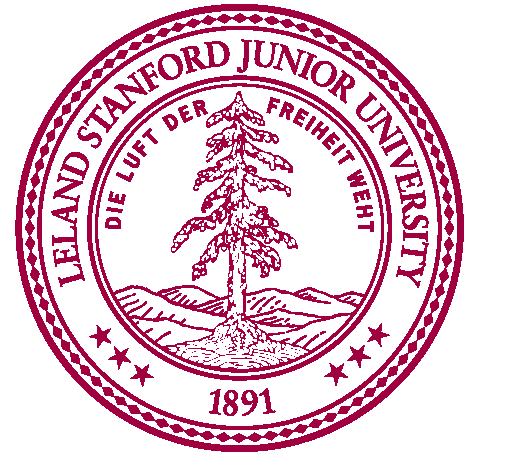 Breakthrough Prize
Fundamental Physics Breakthrough Prize
Breakthrough Prize
Fundamental Physics Breakthrough Prize
 Breakthrough Prize
New Horizons in Physics Prize
Breakthrough Prize
New Horizons in Physics Prize

 California-CA
California-CA

 Medical, Pharmaceutical, Rehabilitation
Medical colleges/Research Institute
Medical, Pharmaceutical, Rehabilitation
Medical colleges/Research Institute
 Nobel prize
Nobel Prize in Chemistry
Nobel prize
Nobel Prize in Chemistry
 Nobel prize
Nobel Prize in Literature
Nobel prize
Nobel Prize in Literature
 Nobel prize
Nobel Prize in Physics
Nobel prize
Nobel Prize in Physics
 Nobel prize
Nobel Prize in Physiology or Medicine
Nobel prize
Nobel Prize in Physiology or Medicine
 Nobel prize
Nobel Memorial Prize in Economic Sciences
Nobel prize
Nobel Memorial Prize in Economic Sciences
 Nobel prize
University/Institute
Nobel prize
University/Institute
 Sinology
Sinology

 Universities in the USA
Universities in the USA
 United States
United States

Stanford University, officially Leland Stanford Junior University,[13][14] is a private research university in Stanford, California. The campus occupies 8,180 acres (3,310 hectares), among the largest in the United States, and enrolls over 17,000 students.[15] Stanford is ranked among the top universities in the world.[16][17][18][19][20]
Stanford was founded in 1885 by Leland and Jane Stanford in memory of their only child, Leland Stanford Jr., who had died of typhoid fever at age 15 the previous year.[2] Leland Stanford was a U.S. senator and former governor of California who made his fortune as a railroad tycoon. The school admitted its first students on October 1, 1891,[2][3] as a coeducational and non-denominational institution. Stanford University struggled financially after the death of Leland Stanford in 1893 and again after much of the campus was damaged by the 1906 San Francisco earthquake.[21] Following World War II, provost Frederick Terman supported faculty and graduates' entrepreneurialism to build self-sufficient local industry in what would later be known as Silicon Valley.[22]
The university is organized around seven schools on the same campus: three schools consisting of 40 academic departments at the undergraduate level as well as four professional schools that focus on graduate programs in law, medicine, education, and business. The university also houses the public policy think tank, the Hoover Institution. Students compete in 36 varsity sports, and the university is one of two private institutions in the Division I FBS Pac-12 Conference. As of May 26, 2022, Stanford has won 131 NCAA team championships,[23] more than any other university, and was awarded the NACDA Directors' Cup for 25 consecutive years, beginning in 1994–1995.[24] In addition, by 2021, Stanford students and alumni had won at least 296 Olympic medals including 150 gold and 79 silver medals.[25]
As of April 2021, 85 Nobel laureates, 29 Turing Award laureates,[note 1] and eight Fields Medalists have been affiliated with Stanford as students, alumni, faculty, or staff.[46] In addition, Stanford is particularly noted for its entrepreneurship and is one of the most successful universities in attracting funding for start-ups.[47][48][49][50][51] Stanford alumni have founded numerous companies, which combined produce more than $2.7 trillion in annual revenue and have created 5.4 million jobs as of 2011, roughly equivalent to the 7th largest economy in the world (as of 2020).[52][53][54] Stanford is the alma mater of U.S. President Herbert Hoover, 74 living billionaires, and 17 astronauts.[55] It is also one of the leading producers of Fulbright Scholars, Marshall Scholars, Rhodes Scholars, and members of the United States Congress.[56]
Stanford University was founded in 1885 by Leland and Jane Stanford, dedicated to the memory of Leland Stanford Jr, their only child. The institution opened in 1891 on Stanford's previous Palo Alto farm.
Jane and Leland Stanford modeled their university after the great eastern universities, most specifically Cornell University in Ithaca, New York. Stanford was referred to as the "Cornell of the West" in 1891 due to a majority of its faculty being former Cornell affiliates (professors, alumni, or both), including its first president, David Starr Jordan, and second president, John Casper Branner. Both Cornell and Stanford were among the first to make higher education accessible, non-sectarian, and open to women as well as men. Cornell is credited as one of the first American universities to adopt that radical departure from traditional education, and Stanford became an early adopter as well.[58]
From an architectural point of view, the Stanfords, particularly Jane, wanted their university to look different from the eastern ones, which had often sought to emulate the style of English university buildings. They specified in the founding grant[59] that the buildings should "be like the old adobe houses of the early Spanish days; they will be one-storied; they will have deep window seats and open fireplaces, and the roofs will be covered with the familiar dark red tiles". This guides the campus buildings to this day. The Stanfords also hired renowned landscape architect Frederick Law Olmsted, who previously designed the Cornell campus, to design the Stanford campus.
When Leland Stanford died in 1893, the continued existence of the university was in jeopardy due to a federal lawsuit against his estate, but Jane Stanford insisted the university remain in operation throughout the financial crisis.[60][61] The university suffered major damage from the 1906 San Francisco earthquake; most of the damage was repaired, but a new library and gymnasium were demolished, and some original features of Memorial Church and the Quad were never restored.[62]
During the early 20th century, the university added four professional graduate schools. Stanford University School of Medicine was established in 1908 when the university acquired Cooper Medical College in San Francisco;[63] it moved to the Stanford campus in 1959.[64] The university's law department, established as an undergraduate curriculum in 1893, was transitioned into a professional law school starting in 1908, and received accreditation from the American Bar Association in 1923.[65] The Stanford Graduate School of Education grew out of the Department of the History and Art of Education, one of the original 21 departments at Stanford, and became a professional graduate school in 1917.[66] The Stanford Graduate School of Business was founded in 1925 at the urging of then-trustee Herbert Hoover.[67] In 1919, The Hoover Institution on War, Revolution and Peace was started by Herbert Hoover to preserve artifacts related to World War I. The SLAC National Accelerator Laboratory (originally named the Stanford Linear Accelerator Center), established in 1962, performs research in particle physics.[68]
In the 1940s and 1950s, engineering professor and later provost Frederick Terman encouraged Stanford engineering graduates to invent products and start their own companies.[69] During the 1950s he established Stanford Industrial Park, a high-tech commercial campus on university land.[70] Also in the 1950s William Shockley, co-inventor of the silicon transistor, recipient of the 1956 Nobel Prize for Physics, and later professor of physics at Stanford, moved to the Palo Alto area and founded a company, Shockley Semiconductor Laboratory. The next year eight of his employees resigned and formed a competing company, Fairchild Semiconductor. The presence of so many high-tech and semiconductor firms helped to establish Stanford and the mid-Peninsula as a hotbed of innovation, eventually named Silicon Valley after the key ingredient in transistors.[71] Shockley and Terman are often described, separately or jointly, as the "fathers of Silicon Valley".[72][73]
Stanford in the 1960s rose from a regional university to one of the most prestigious in the United States, "when it appeared on lists of the "top ten" universities in America… This swift rise to performance [was] understood at the time as related directly to the university's defense contracts…"[74]
In the following decades however controversies would damage the reputation of the school. The 1971 Stanford prison experiment was criticized as unethical,[75] and the misuse of government funds from 1981 resulted in severe penalties to the school's research funding[76][77] and the resignation of Stanford President Donald Kennedy in 1992.
Research centers and institutes
Stanford is classified among "R1: Doctoral Universities – Very high research activity."[145] The university's research expenditure in fiscal year 2021 was $1.69 billion and total sponsored projects was 7,900+.[149] As of 2016 the Office of the Vice Provost and Dean of Research oversaw eighteen independent laboratories, centers, and institutes. Dr. Kathryn Ann Moler are the key person for leading those research centers for choosing problems, faculty members, and students. Funding is also provided for undergraduate and graduate students by those labs, centers, and institutes for collaborative research.[150]
Other Stanford-affiliated institutions include the SLAC National Accelerator Laboratory (originally the Stanford Linear Accelerator Center), the Stanford Research Institute (an independent institution which originated at the university), the Hoover Institution (a conservative[151] think tank) and the Hasso Plattner Institute of Design (a multidisciplinary design school in cooperation with the Hasso Plattner Institute of University of Potsdam that integrates product design, engineering, and business management education).[citation needed]
Stanford is home to the Martin Luther King Jr. Research and Education Institute which grew out of and still contains the Martin Luther King Jr. Papers Project, a collaboration with the King Center to publish the King papers held by the King Center.[152] It also runs the John S. Knight Fellowship for Professional Journalists and the Center for Ocean Solutions, which brings together marine science and policy to address challenges facing the ocean. It focuses mainly 5 points, such as climate change, overfishing, coastal development, pollution and plastics.[153]
Together with UC Berkeley and UC San Francisco, Stanford is part of the Biohub, a new medical science research center founded in 2016 by a $600 million commitment from Facebook CEO and founder Mark Zuckerberg and pediatrician Priscilla Chan. This medical research center is working for designing advanced-level health care units.






